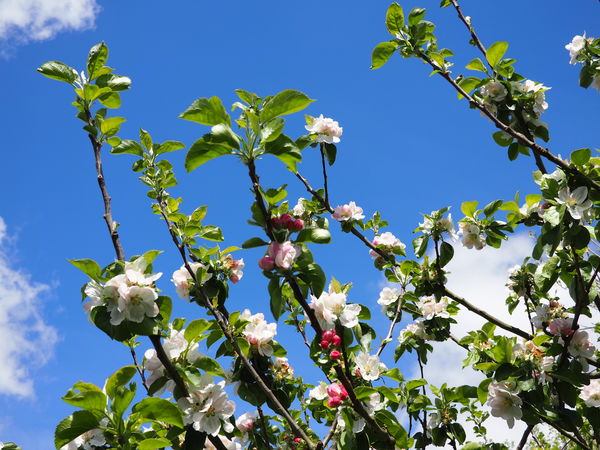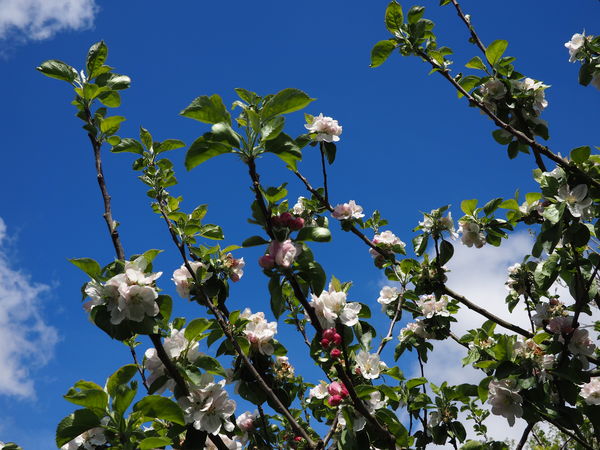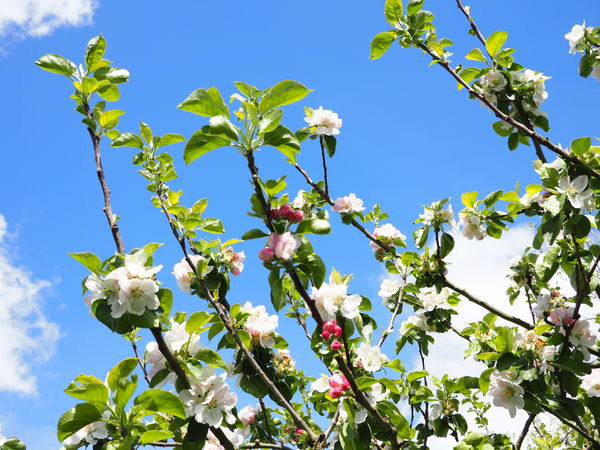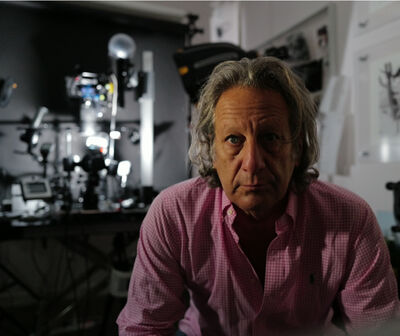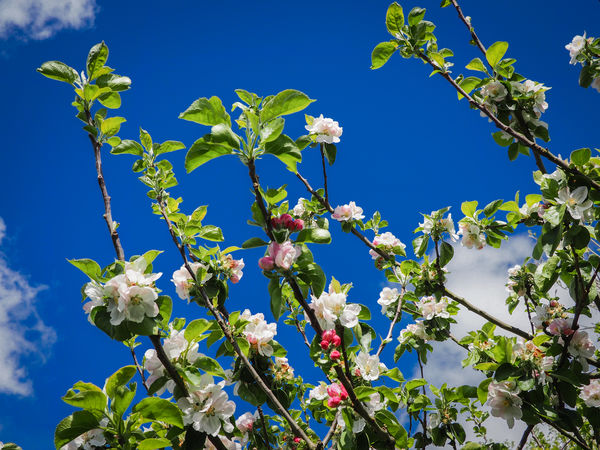Over Expose vs Under Expose
May 16, 2016 06:37:28 #
Over the past couple of years I have experimented with HDR with mixed results, my problem is although I have a tripod I rarely use it so any attempts a HDR usually fail.
However with images taken with exposure bracketing set at 3 frames, + 0.7EV - 0.7EV and 0.0EV I am experimenting with ETTR and ETTL.
Generally I am finding that the images which are underexposed can be processed to produce an excellent image but the overexposed do not develop as good.
The photos exposed at 0.0EV are very good but the images from the -0.7 are just that bit better.
What the thinking of UHH members on ETTR and ETTL, I will attach three photos straight from the camera to will show what I mean.
However with images taken with exposure bracketing set at 3 frames, + 0.7EV - 0.7EV and 0.0EV I am experimenting with ETTR and ETTL.
Generally I am finding that the images which are underexposed can be processed to produce an excellent image but the overexposed do not develop as good.
The photos exposed at 0.0EV are very good but the images from the -0.7 are just that bit better.
What the thinking of UHH members on ETTR and ETTL, I will attach three photos straight from the camera to will show what I mean.
May 16, 2016 06:47:42 #
These may be of interest:
http://www.uglyhedgehog.com/t-370552-1.html
http://www.uglyhedgehog.com/t-384209-1.html
http://www.uglyhedgehog.com/t-370552-1.html
http://www.uglyhedgehog.com/t-384209-1.html
May 16, 2016 07:37:32 #
I am no expert on ETTR, ETTL, or EBTR but I think what you need to do is ETTR or EBTR and then correct the image in your PP software of your choice. When doing that, your ETTR or EBTR images will be better than the ETTL or centered histogram exposures.
May 16, 2016 07:44:26 #
johneccles wrote:
However with images taken with exposure bracketing set at 3 frames, + 0.7EV - 0.7EV and 0.0EV I am experimenting with ETTR and ETTL.
Generally I am finding that the images which are underexposed can be processed to produce an excellent image but the overexposed do not develop as good.
However with images taken with exposure bracketing set at 3 frames, + 0.7EV - 0.7EV and 0.0EV I am experimenting with ETTR and ETTL.
Generally I am finding that the images which are underexposed can be processed to produce an excellent image but the overexposed do not develop as good.
The fundamental problem is defining what is or is not "over exposure". Assuming a light meter gives the correct exposure, and that necessarily +0.7 EV is over exposure and -0.7 EV is under exposure is flawed logic! It just isn't so.
Your "under exposed" shot is just a tad over exposed. The other two are enough over exposed to have visible differences.
How can that be determine? Look at a good histogram, or use a threshold tool, or find software that does analysis on images. If any pixels are at a value of 255, they are clipping. If any pixels are higher than 245 they may as well be clipping because there will not be visible detail above that value. (Your "under exposed" version has some pixels at 255, though perhaps not pixels where detail is important.)
What you want to learn to do is how to shoot where the RAW data is not clipping, and then when you convert to an RGB image (JPEG or TIFF) you can set the highest pixels to between 245 and 255 (nothing where detail is desired should be above 245), and use tone mapping with the gamma curve to place other values where you want them. Perhaps specifically setting middle grey and then a black point (consider everything below a value of 20 to be blacker than black). That might well be some form of a distorted S curve for gamma. It will add "pop" to your images. When shooting in color it is also nice to adjust saturation to taste.
I can post histograms and a screen capture of the curves tool in GIMP, plus the resulting JPEG image if you would like. Editing a JPEG doesn't provide the same results that could be obtained starting with the RAW file, but it does demonstrate what to do.
May 16, 2016 07:49:04 #
Thanks for your detailed reply, it has given me something to think about.
May 16, 2016 07:53:01 #
Apaflo wrote:
The fundamental problem is defining what is or is ... (show quote)
I noticed that the clouds on the right are washed out in all the images so I agree that all 3 images are overexposed.
May 16, 2016 08:00:35 #
Great subject. I have been using both Nik (which is now free) and Topaz. I do a fair amount of Flower shots and like both for different effects.
Don
Don
May 16, 2016 08:01:02 #
I'm using Lightroom. Can anyone tell me where the numerical exposure values can be found on the histogram?
May 16, 2016 08:03:49 #
johneccles wrote:
Over the past couple of years I have experimented... (show quote)
That's because over exposure tends to blow the highlights while severe underexposure creates added noise while preserving most details. The trick is to get it just right.
May 16, 2016 08:22:43 #
pyroManiac
Loc: HIXSON,TN
I have found that a properly exposed photo sometimes cannot be improved by Photoshoping. HDR can be useful but frequently looks phony. I expect blacks to be black and whites to be white but a graduated ND filter I use where extreme contrasts exist.
May 16, 2016 08:30:05 #
I was taught to shoot to the right, not the left (of your histogram). Since 50% of your image's light comes from your Lowest fstop with a 50% reduction of light in each fstop, shooting to under expose causes noise. Better to increase your exposure compensation to shift your histogram to the right (without blowing past 255) in order to darken, rather than lightening images. Luminous Landscape has a very good explanation and tutorial on this very topic worth reading.
May 16, 2016 09:11:55 #
As much as I would like to join the donnybrook over proper exposure and developing methods, I jumped to the bottom line. Here is my take. Less than a minute to do. If anyone asks, I will share how I did it.
By the way, thanks for posting this pretty picture. Though I like the flowers and sky, the picture has little compositional merit.
By the way, thanks for posting this pretty picture. Though I like the flowers and sky, the picture has little compositional merit.
May 16, 2016 10:06:14 #
johneccles wrote:
... Generally I am finding that the images which are underexposed can be processed to produce an excellent image but the overexposed do not develop as good. ....
If you are expecting to see any color in a specular reflection you are bound to be disappointed. The darker version tones them down but at the expense of fairly dark shadows.
This subject is unfortunate since the shiny leaves are showing large areas of specular reflection of sunlight. Your histogram might have given you a hint and if your camera can display blinkies they would have probably been flashing for all three versions.
These specular reflections show that this subject has a very wide dynamic range, maybe even more than most digital cameras can capture easily. HDR won't work here because something is bound to move.
To get what you want you will need to work with the raw file. You may still need to bracket. The best image will be the one where you can still recover the highlights (the clouds and most of the specular reflections on the leaves) and still have something that you can recover in the shadows.
Don't think of it as over- or under-exposing or getting the exposure "right". Think instead of getting a raw exposure you can work with to make the image you want.
May 16, 2016 10:28:34 #
Thanks for your very informative post, I will have to follow your tips.
I had left my camera with Bracketing set to +/- 0.7EV after trying some HDR shots but the subject matter was not suitable due to movement in the trees.
So I decided to develop the over/under exposed shots and discovered that I could improve the underexposed to a better image than the normal image, but I could not improve the overexposed one mainly due to blow outs, I think I might reduce the EV to 0.03 and see what difference that makes.
I had left my camera with Bracketing set to +/- 0.7EV after trying some HDR shots but the subject matter was not suitable due to movement in the trees.
So I decided to develop the over/under exposed shots and discovered that I could improve the underexposed to a better image than the normal image, but I could not improve the overexposed one mainly due to blow outs, I think I might reduce the EV to 0.03 and see what difference that makes.
May 16, 2016 10:51:25 #
johneccles wrote:
Thanks for your very informative post, I will have... (show quote)
Your "under exposed" shot is not under exposed!
For that particular shot (but maybe not for the next one you do), you'd want to set the Exposure Compensation to -1.0 EV.
What exposure mode are you using? How to adjust Compensation depends greatly on which mode you are using.
That is based on only seeing those particular JPEG conversions though. I'm willing to bet the RAW file for the middle one, at 0 EV, can be properly processed without the clipped highlights. If you could put the RAW file on dropbox.com or something similar it would really be interesting to see what others can do with it.
If you want to reply, then register here. Registration is free and your account is created instantly, so you can post right away.

